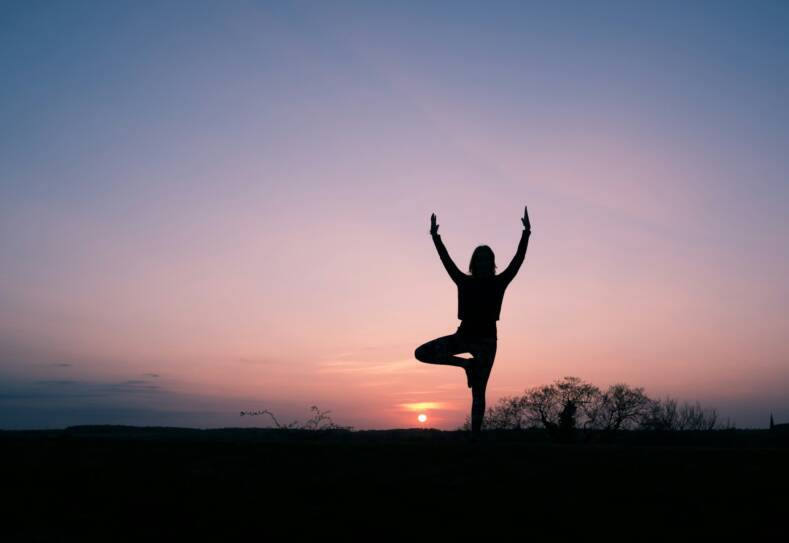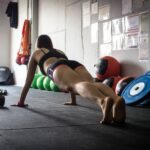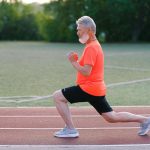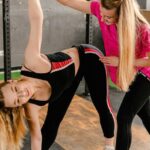Balance and stretching activities are fundamental components of a healthy lifestyle. They play a crucial role in maintaining physical stability, ensuring proper posture, and reducing the risk of injuries. Balance exercises, such as standing on one leg or performing weight shifts, enhance the body’s ability to control and maintain its position, whether in motion or at rest. These activities are not only beneficial for athletes but are also crucial for individuals of all ages to incorporate into their daily routines, as they can lead to improved coordination and stability.
Stretching, on the other hand, complements balance exercises by promoting flexibility. It helps to lengthen the muscles, increase the range of motion in the joints, and can alleviate muscular tension. Regular stretching aids in preventing stiffness, which can be a common occurrence due to sedentary lifestyles or aging. Activities such as tai chi, yoga, and specific stretches targeting various muscle groups can significantly improve flexibility and support the body’s balance mechanisms.
Together, balance and stretching exercises form a synergistic duo that can bolster one’s overall well-being. Integrating these activities into one’s regular fitness regimen can improve physical function, help in preventing falls, especially in older adults, and contribute to greater body awareness. They require minimal equipment and can be adjusted in difficulty to cater to different fitness levels, making them accessible and essential for a broad demographic.
Understanding Balance and Its Importance
Balance is a critical aspect of overall physical health, involving the complex coordination of muscles and sensory systems to achieve stability. Good balance is essential for daily activities and mobility.
The Science of Balance
Balance is regulated by the vestibular system in the inner ear, the visual system, and proprioceptors in the muscles and joints. These systems work together to send signals to the brain, which in turn coordinates muscle actions to maintain stability and posture. Achieving balance requires multiple muscle groups to adjust and realign constantly to counteract the force of gravity.
Benefits of Good Balance
Individuals with good balance experience several benefits:
- Reduced risk of falls: Especially critical for the elderly, maintaining balance can significantly decrease the occurrence of falls.
- Improved coordination: Enhanced stability assists in the efficient coordination of movements during physical activity.
- Increased body awareness: Knowing the position of one’s body in space helps in navigating various environments and avoiding potential hazards.
Impact of Aging on Balance and Coordination
As individuals age, changes in the vestibular system, vision, and muscle strength can affect balance and coordination. These changes can lead to an increased risk of falls and reduced independence. However, regular balance and stretching exercises are shown to help maintain and even improve balance and muscular coordination, thus helping to prevent falls and retain mobility in older adults.
Core Exercises for Improved Balance
Incorporating core exercises into one’s routine enhances balance by engaging and strengthening the muscles responsible for stability. Utilizing both balance-focused workouts and lower-body strength-training exercises is essential for developing a solid foundation of balance and stability.
Balance-Enhancing Workouts
Balance exercises typically target the core muscles—encompassing the pelvis, lower back, hips, and stomach. These muscles work in concert to support postural stability. Here are some balance-improving workouts:
- Single-Leg Stands: Stand on one leg while maintaining a straight posture, then switch to the other leg.
- Heel-to-Toe Walk: Walk in a straight line, placing the heel of one foot just in front of the toes of the opposite foot with each step.
Using a stability ball can also augment these exercises, demanding greater control and core engagement as one manages the instability of the ball.
Strength Training for Stability
Strength training exercises, especially those focused on the lower body, complement balance workouts by building the necessary power for stability.
- Squats: Stand with feet shoulder-width apart and lower the body as if sitting back into a chair, keeping the chest upright and knees behind the toes.
- Lunges: Step forward with one leg, lowering the hips until both knees are bent at a 90-degree angle.
These exercises not only improve balance but also enhance overall lower-body strength. Incorporating these workouts regularly into a fitness routine can lead to better balance and stability in everyday activities.
Flexibility and Stretching Routines
Incorporating stretching into one’s routine enhances flexibility, essential for overall health. Stretching can improve joint range of motion, decrease the risk of injury, and offer stress relief. Regularly practicing certain stretches and engaging in activities like yoga and tai chi can target major muscle groups and improve both physical balance and mental well-being.
Yoga and Tai Chi Practices
Yoga and Tai Chi are disciplines that integrate slow, methodical movements with breath control to enhance flexibility and balance. Yoga combines poses, called asanas, and breathing techniques, enhancing flexibility, particularly in the spine, hips, and shoulders. A simple yoga routine may incorporate poses such as:
- Cat-Cow Stretch: to warm up the spine.
- Downward-Facing Dog: to stretch the hamstrings, calves, and back.
- Child’s Pose: to relax and stretch the lower back and hips.
Tai Chi, on the other hand, is a martial art known for its defense techniques and health benefits. It involves a series of flowing movements that can improve muscular strength, flexibility, and joint health. A Tai Chi sequence may help loosen the neck, relax the body, and align the spine.
Dynamic Stretching Techniques
Dynamic stretches involve active movements that cause muscles to stretch, but the stretch is not held in the end position. These stretches are particularly useful before physical activity as they help warm up the body and increase range of motion. Examples of dynamic stretches include:
- Arm Circles: to warm up the shoulders and improve joint range of motion.
- Leg Swings: to prepare the hamstrings and hip flexors for exercise.
- Lunges: to activate the muscles in the legs and hips.
Such techniques improve blood flow to the areas being worked, preparing both the muscles and joints for impending activity, reducing the risk of injury, and allowing for more comfortable and effective movement.
Injury Prevention and Recovery Strategies
Injury prevention and balance recovery are critical for maintaining an active lifestyle and avoiding health complications. Effective strategies encompass targeted exercises that minimize the risk of falls and facilitate rehabilitation post-injury.
Exercises to Prevent Falls and Injuries
Exercises to prevent falls play an essential role in protecting individuals, especially older adults, from the high risks associated with losing balance. Strengthening and proprioceptive exercises are known to enhance balance capabilities and muscle control, directly reducing the likelihood of falls. For comprehensive prevention, a regimen should include:
- Balance Training: Practices such as standing on one leg or using balance boards.
- Strength Exercises: Squats and leg presses to fortify the lower body.
- Proprioceptive Drills: Tai chi or similar activities to improve the awareness of body position in space.
These exercises, ideally supervised by a physical therapist, should be tailored to each individual’s fitness level and health status to ensure safety and effectiveness.
Rehabilitation Exercises for Balance Recovery
Post-injury, rehabilitation exercises are pivotal for regaining balance and averting subsequent injuries. When returning to physical activities:
- Range of Motion Exercises: Gently moving the injured joint through its full range.
- Strengthening Exercises: Gradually increasing resistance to build muscle around the injured area.
- Functional Training: Mimicking daily activities to restore coordination.
A physical therapist can design a rehabilitation program that takes into account the specific injuries and needs of the patient to promote optimal recovery. This approach not only aids balance restoration but also targets the prevention of future injuries.
Balance Training for Specific Populations
The importance of balance training is magnified within particular populations, such as older adults and athletes, due to their unique physical demands and goals. These exercises are tailored to improve key areas such as coordination, strength, and athletic performance.
Activities for Older Adults
Older adults benefit significantly from balance training, which is essential in fall prevention and maintaining independence. It is advisable to incorporate balance exercises into regular physical activity, focusing on muscle strengthening and balance itself. A recommended routine might include:
- Strengthening exercises 2-3 times a week, with an emphasis on leg and core muscles to support balance.
- Balance-specific activities performed three days a week or more, like standing on one foot, heel-to-toe walks, or tai chi.
- Utilizing supportive equipment as needed, such as holding onto a chair, to ensure safety during exercises.
Balance Drills for Athletes
For athletes, balance and coordination drills enhance athletic performance and reduce the risk of sports-related injuries. Sports that require quick shifts in direction or balance on uneven terrain, such as soccer or basketball, can benefit from drills that challenge and improve these skills. Athletes might engage in:
- Dynamic balance exercises: Such as single-leg reaches or stability ball drills, typically performed 2-7 times a week depending on the sport’s demand.
- Coordination and strength activities: Including plyometric exercises, agility ladders, or proprioceptive neuromuscular facilitation (PNF), which can be integrated into a regular training regimen to complement their sport-specific skills.
In both cases, the design of the balance program should consider the individual’s current fitness level and be progressively challenging to ensure continuous improvement in balance and coordination.
Advanced Balance Challenges
Advanced balance training typically involves exercises that promote dynamic balance, coordination, and the use of unstable surfaces. These methods challenge the body’s balance systems and can lead to improved stability and functionality.
Unstable Surface Training
Training on unstable surfaces engages multiple muscle groups, especially the core, and enhances proprioceptive abilities. They can perform exercises like squats or lunges on a BOSU ball, balance pad, or wobble board. The key is for individuals to maintain correct form while the surface beneath them shifts.
- Balance Pad Squats: Stand on a balance pad with feet hip-width apart. Lower into a squat while maintaining an upright posture.
- Wobble Board Lunges: Place the front foot on the wobble board, lunging forward while keeping the back straight and engaging the core.
Complex Movements for Coordination
Complex movements that involve a sequence of motions require high levels of coordination and can significantly improve dynamic balance. Such exercises include multi-directional reaches or dance-like routines that necessitate precise body control.
- Multi-Directional Lunges: Perform lunges in different directions—forward, sideways, and backward—while keeping the torso erect.
- Dance Routines: Incorporate steps that demand the individual to spin, step quickly in various directions, and balance on one foot.
Tools and Equipment for Balance Exercises
To enhance balance and stability, specific tools and equipment are designed to challenge the body’s equilibrium, engaging core muscles and improving overall coordination.
Utilizing Props for Stability Practice
Props like the Bosu ball, stability ball, and dumbbells serve as versatile tools in stability practice.
- Bosu Ball: A Bosu ball provides a dynamic surface for a variety of exercises aimed at improving balance and core strength. One can perform exercises such as squats, lunges, or planks with either the flat side or the dome side up to increase the challenge.
- Stability Ball: Often used for core workouts, a stability ball can also be incorporated into balance exercises. For instance, practitioners might try maintaining a seated balance, or perform exercises such as the stability ball V-pass.
- Dumbbells: Though primarily used for strength training, dumbbells can enhance balance exercises by adding weight distribution challenges during movements like single-leg deadlifts or side leg raises.
Incorporating Technology for Feedback and Improvement
Advanced technology provides users with feedback to guide improvement during balance training.
- Balance Training Apps and Platforms: Certain apps and digital platforms are designed to analyze balance and offer real-time feedback, helping users to adjust and refine their stances and movements.
- Wearable Devices: Fitness trackers and smartwatches can track balance and stability improvements over time, offering insights into the user’s progress and areas needing attention.
These tools and equipment, when used appropriately, can support individuals in advancing their balance training, leading to better posture, enhanced coordination, and a reduced risk of falls.
Lifestyle Considerations for Better Balance
Optimal balance is not just a matter of physical exercise; it’s a multifaceted lifestyle approach involving proper nutrition, hydration, and the mind-body connection. These factors contribute to the overall well-being and enhance an individual’s active mobility.
Nutrition and Hydration
Adequate nutrition plays a crucial role in maintaining balance by supplying the body with the necessary vitamins and minerals to support the musculoskeletal system. Individuals should incorporate a variety of nutrient-rich foods such as whole grains, lean proteins, fruits, and vegetables into their diets.
- Calcium and Vitamin D are essential for bone health; sources include dairy products, leafy greens, and fortified foods.
- Foods rich in potassium, like bananas and sweet potatoes, can help maintain muscle function and prevent cramps.
Proper hydration is just as important for balance. Dehydration can lead to dizziness and muscle fatigue, impacting stability. Adults should aim for approximately 2-3 liters of water per day, but this can vary based on factors such as age, gender, climate, and activity level.
- A simple hydration guideline: Men should aim for about 3.7 liters of water, while women should aim for about 2.7 liters including all beverages and water-rich foods per day.
Mind-Body Connection
The mind-body connection is vital for balance as the brain, ears, and eyes work together to maintain spatial orientation and coordinate movement. Practices that enhance this connection can improve one’s balance and overall mobility.
- Yoga and Tai Chi: These activities are particularly effective at improving balance, as they focus on slow, deliberate movements and require a mental focus that helps to synchronize the body’s movements with sensory inputs.
- Visualization and meditative practices: By visualizing balance, individuals can potentially enhance their physical stability through improved mental focus and stress reduction.
In conclusion, a balanced lifestyle is integral for individuals aiming for better balance. This includes conscientious choices about diet and hydration along with activities that foster a stronger mind-body connection.








